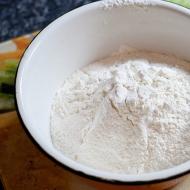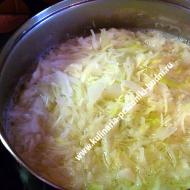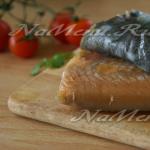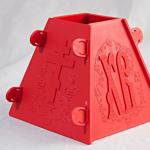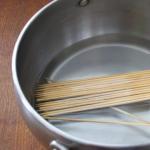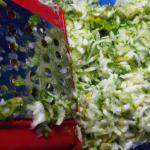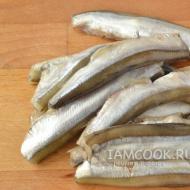
Chemical composition of sea salt. Sea salt. Benefit. Treatment with sea salt. Application
Even in the time of Hippocrates, people noticed that salt from the sea has medicinal properties, in particular, it has a beneficial effect on regenerative processes in the body. But the beneficial properties of sea salt are not limited to this.
History of sea salt
Sea salt is extracted from sea water. Residents of countries with hot climates (Italy, Greece) were the first to extract sea salt. For this purpose, a network of shallow ponds was created. Sea water entered the first pond through canals. Under the scorching sun, it began to evaporate. The heavier minerals began to settle first. After this process began, the water was distilled into a second (smaller) pond, where the procedure was repeated. Then the remaining water was distilled into the third pond and so on. The last pond contained almost pure water without impurities. After the water in this pond dried out, only salt remained at the bottom. This method is still used today. Every year the world produces about 6-6.5 million tons of sea salt.
Interestingly, sea salt is mined not only in countries with hot climates. In colder countries, salt is simply evaporated from seawater in special vats. This is how sea salt was obtained in England and Russia.
Composition and benefits of sea salt
Sea salt is very rich in macro- and microelements in its chemical composition. It contains potassium, calcium, iodine, magnesium, bromine, chlorine, iron, zinc, silicon, copper, fluorine. Thanks to this composition, sea salt:
- has a beneficial effect on the cardiovascular system,
- reduces the development of diseases of the musculoskeletal system,
- reduces the risk of developing thyroid diseases,
- participates in cell regeneration,
- helps improve skin elasticity,
- has an antiseptic effect,
- helps relieve pain,
- helps reduce stress,
- increases overall vitality.
Sodium and potassium contained in sea salt accelerate metabolic processes in our body, iodine acts as a regulator of lipid and hormonal processes, calcium prevents the development of infections, manganese helps strengthen the immune system, zinc has a beneficial effect on the reproductive system, iron helps the formation of new red blood cells in the blood, and magnesium has antiallergic properties .
Sea salt can be consumed internally and used externally.
Internal use of sea salt
When buying sea salt to add to food, you need to pay attention to the potassium content in it. Sea salt has an inconspicuous grayish color, not much different in taste from ordinary table salt.
There is an opinion that consuming sea salt is much better than consuming table salt. However, this is a controversial statement. Both types contain chlorine ions, which are the main material for the production  of hydrochloric acid. Hydrochloric acid is an important component of gastric juice. In addition, both salts contain sodium ions, which, together with ions of other elements, are involved in the transmission of nerve impulses and the contraction of muscle fibers. Therefore, it is not the salt itself that is important to the body, but the chloride and sodium ions it contains. Without these ions, the human body is not able to function normally.
of hydrochloric acid. Hydrochloric acid is an important component of gastric juice. In addition, both salts contain sodium ions, which, together with ions of other elements, are involved in the transmission of nerve impulses and the contraction of muscle fibers. Therefore, it is not the salt itself that is important to the body, but the chloride and sodium ions it contains. Without these ions, the human body is not able to function normally.
Since salt is the most affordable option for obtaining the necessary ions in the required quantity, a person eats it. It is enough to consume 10-15 grams (in hot climates 25-30 grams) of salt per day. But sea salt, compared to table salt, has a greater range of macro- and microelements. This is the difference between them.
It is worth remembering that it is better to salt already prepared food rather than food that is at the cooking stage. This way, less salt is consumed, and its content in food increases.
External use of sea salt
A hot bath with the addition of sea salt cleanses the pores, and the silicon it contains makes the skin elastic and firm. In addition, bromine, along with hot air vapor, enters the body through the respiratory tract, which helps relieve tension and calm the nervous system. Calcium, penetrating through cleaned pores, promotes rapid healing of wounds and hematomas, and also strengthens cell membranes.
A bath with water temperature of 36 o C and with the addition of sea salt helps strengthen the immune system (the bath should be taken every other day for a month).
A hot bath with water temperature of 42 o C and with sea salt is used to treat neuritis and arthritis.
Rubbing with an aqueous solution of sea salt improves blood circulation and strengthens the immune system. 
Inhalation of sea salt solution is used in the treatment of diseases of the upper respiratory tract.
Since salt increases the sensitivity of the skin, its use is contraindicated for certain skin diseases (neurodermatitis, psoriasis, rosacea).
Due to its high hygroscopicity, sea salt should be stored in a dry, airtight container.
So, sea salt can truly be considered a natural treasure of valuable substances, a gift from the sea. Its applications are multifaceted, and its properties are amazing. But remember that sea salt is also salt, so its use should be limited to the body's needs.
Salt is an important component of human blood. It performs many vital functions for the body: it activates metabolic processes, regulates the functioning of the heart, kidneys, and blood vessels. Therefore, it should be included in the diet.
Sea salt is especially useful. This natural product contains substances necessary for the human body such as iodine, potassium, calcium, sodium, magnesium, bromine, chlorides, iron, zinc. Salt contains more than 80 microelements important for health.
Natural minerals provide nutrition to cells, regulate their cleansing and improve regeneration, and help ensure the transmission of information along nerve fibers. Salt is involved in the processes of blood clotting, normalization of the nervous system, etc.
Sodium and potassium promote muscle growth and strengthening, and magnesium helps them relax, has a beneficial effect on the skin, improves its renewal, and has a healing effect in case of damage. The product is used in cooking, cosmetology and medicine.
The healing properties of sea salt have been known since ancient times. Hippocrates mentioned them in his medical writings. It helps people cope with many ailments. The list of diseases includes: hypertension, periodontal disease, osteochondrosis, arthritis and radiculitis. It is used in the treatment of hemorrhoids, gastrointestinal disorders, fungal infections of skin tissue, conjunctivitis, injuries and poisoning.
It has a therapeutic effect, has analgesic, anti-inflammatory and bactericidal properties. This natural product relieves fatigue and stress, calms the nervous system and improves mood. It has found wide application in homeopathy and traditional medicine.
Treatment of diseases
 A solution of sea salt is used to treat runny nose and nasal congestion. It effectively thins mucus, helps remove it from the nasal cavity, and disinfects the mucous membrane. This is how they prepare it. Add a pinch of salt to 200 milliliters of warm water and dissolve it. This solution is washed or instilled into the nose four times a day.
A solution of sea salt is used to treat runny nose and nasal congestion. It effectively thins mucus, helps remove it from the nasal cavity, and disinfects the mucous membrane. This is how they prepare it. Add a pinch of salt to 200 milliliters of warm water and dissolve it. This solution is washed or instilled into the nose four times a day.
You can warm your nose when you have a cold with this remedy. Sea salt is heated in a frying pan and poured into a small knitted sock. Apply it to the maxillary sinuses and bridge of the nose in the form of a dry compress. This procedure will quickly get rid of a runny nose.
For prolonged runny nose and swelling of the nasal sinuses, prepare this remedy. Lemon juice is mixed with a teaspoon of salt and the mixture is poured with 100 milliliters of water. This solution is instilled into the nose. The product narrows capillaries, eliminates swelling and effectively removes mucus.
To improve your well-being, take such an invigorating bath in the morning. Water temperature – no more than 32-34°C. Ingredients: decoction of calendula flowers, lavender and valerian root, 10 drops of essential oil of jasmine, chamomile, oregano or mint. Next, 100 grams of salt are dissolved in warm water and also poured into the bath. The procedure is carried out lying in water in a relaxed state for up to 30 minutes.
For gout and swelling. You need to prepare a decoction of chamomile flowers: add two glasses of dry plant material to 15 liters of boiling water. Boil the composition and pour it into the bath. Add salt (200 grams) there. The pain will gradually go away.
Numerous bites from a non-rabid dog or cat can be treated with this procedure. Prepare a warm bath with saline solution. Take two kilograms of sea salt for a full container. Immerse yourself in it for 25-45 minutes. After the procedure, the salt is washed off with a shower.
Sea salt is an inexpensive but effective remedy in the treatment of many ailments. However, it has some contraindications. Patients with rosacea (vasodilation of the skin), photodermatosis and neurodermatitis should not take therapeutic salt baths.
Sea salt: what beneficial substances its composition is rich in, what positive effect it has on the human body, are there any contraindications to its use. Recipes for dishes with sea salt.
The content of the article:
Sea salt is a natural flavor enhancer. It is extracted from the depths of the sea, most often by evaporation of sea water in the sun. This salt is much healthier than regular table salt, because it contains many minerals and trace elements, in a ratio balanced by nature itself. Also, the iodine present in it does not erode over time, as is the case with ordinary iodized salt, where it is added artificially. Due to its beneficial qualities, housewives are increasingly using this product in the kitchen.
Composition and calorie content of sea salt

Although sea salt does not contain vitamins, it is rich in minerals. In total, it contains about 40 macro- and microelements. In addition, there are no carcinogens or harmful components, as well as carbohydrates.
The calorie content of sea salt per 100 grams is 1 kcal, of which:
- Proteins - 0 g;
- Fats - 0 g;
- Carbohydrates - 0 g;
- Water - 0.2 g;
- Inorganic substances - 99.8 g.
- Calcium - 24 mg;
- Sodium - 38758 mg;
- Potassium - 8 mg;
- Magnesium - 1 mg.
- Iron - 0.33 mg;
- Zinc - 0.1 mg;
- Manganese - 0.1 mg;
- Fluoride - 2 mcg;
- Selenium - 0.1 mcg.
Let's consider the positive effects of macro- and microelements on the human body:
- Calcium. Participates in metabolism, serves to strengthen bone tissue and build cell membranes. Increases blood clotting, accelerates wound healing and suppresses infections of bacterial origin.
- Sodium. Ensures normal functioning of the digestive and excretory systems.
- Potassium. Participates in the conduction of nerve impulses, stimulates thought processes. Thanks to it, the nutrition of cells is regulated, they are cleansed of toxins and harmful substances.
- Magnesium. Helps fight stress. It has a powerful anti-allergic effect and strengthens the walls of blood vessels.
- Iron. Takes part in the formation of immune cells in the body. Supplies oxygen to all organs.
- Zinc. Necessary for the prevention of arthritis and proper development of bones, prevents the onset of diabetes. The presence of this mineral has a good effect on the function of the gonads.
- Manganese. Helps normalize the composition of cartilage and bone tissue, activates brain activity and pancreatic function.
- Selenium. Serves for the prevention of malignant tumors, helps increase immunity and produce enzymes. When introduced into the daily diet, sea salt promotes the formation of red blood cells and strengthens the immune system.
- Fluorine. It has an anti-carious effect, has a positive effect on blood circulation, and increases resistance to radiation.
- Iodine. Promotes the production of thyroid hormone, as well as the proper development of the body in children. Thanks to the content of this element, lipid metabolism is restored.
- Copper. Promotes the production of collagen, necessary for the formation of hemoglobin. Good for the heart muscle.
- Bromine. Activates sexual function, has a calming effect on the nervous system, and relieves overexcitation.
- Chlorine. Restores acid-base balance, regulates digestion.
- Silicon. Serves to strengthen blood vessels, necessary for good heart function. Improves the appearance and health of hair and nails, increases skin elasticity, eliminates intoxication.
Beneficial properties of sea salt

The benefits of sea salt lie in its balanced content of mineral elements. They have a beneficial effect on the body.
When consumed regularly, sea salt:
- Helps improve skin condition: acne disappears, tone increases;
- Increases the body's defenses, the ability to resist diseases increases;
- Has a beneficial effect on the human nervous system and reduces the tendency to stress, eliminates depression, restores sleep;
- Restores hormonal levels, the ratio of hormone levels returns to normal;
- Optimizes metabolism: accelerates the flow of chemical reactions in the body;
- Reduces the likelihood of cancer: daily consumption of sea salt helps to avoid cancer;
- Purifies the blood, suppresses free radicals and removes toxins;
- Helps with joint diseases - arthritis, rheumatism;
- Stabilizes the process of saliva formation;
- Stimulates digestion and promotes the production of beneficial bacteria in the intestines.
Sea salt is indispensable during colds; rinsing with it helps get rid of a runny nose during sinusitis, sinusitis, rhinitis, and rinsing with it helps with sore throats.
Harm and contraindications to the use of sea salt

Moderate consumption of sea salt has only a positive effect on the human body. While its abuse can cause significant harm. The daily portion of the product should not be more than seven grams.
Otherwise, the following consequences are possible:
- Increased blood pressure, which causes an increase in load on blood vessels, the risk of developing hypertension, stroke;
- Complications in the functioning of the kidneys: the functioning of the urinary system is disrupted, which can lead to the formation of stones;
- Eye problems such as increased intraocular pressure, cataracts;
- Violation of the water-alkaline balance: fluid retention occurs, and, consequently, swelling;
- An increase in the load on the heart is especially dangerous in case of existing cardiac pathologies;
- Problems with blood vessels, resulting in headaches;
- Inflammation of the joints - arthritis.
A contraindication to the use of sea salt, as well as regular table salt, in some cases may be pregnancy. During this period, its use, even within normal limits, can cause fluid retention in the body, which leads to edema. In such cases, doctors recommend reducing the use of the product to a minimum.
Sea salt recipes

Food prepared with sea salt acquires not only an exquisite taste, but also a lot of beneficial properties. Using only high-quality products and natural food additives extracted from the depths of the seas in your diet, you can make your table not only tasty, but also healthy.
Consider recipes with sea salt
- Pork steak with coarse sea salt. For this dish we take pork pulp, preferably the neck part, always with a small amount of fat. Cut the steaks across the grain, 2 cm thick. Heat a non-stick frying pan. Place pieces of meat on it and fry on both sides for two minutes until golden brown. Next, reduce the heat, pour about 0.5 cups of water into the pan and cover with a lid. The meat should simmer for 10 minutes. After this time, make sure that the water has completely evaporated, generously pepper the pieces on both sides and sprinkle with finely chopped garlic. Add a little vegetable oil to the pan and fry the steaks again on both sides until a beautiful golden color appears. Place the meat on a plate and sprinkle with coarse sea salt. You can serve fried green beans as a side dish.
- Peasant potatoes with sea salt. Take 6-7 medium-sized potatoes. We cut it into slices without peeling the skin, after washing it thoroughly. In a separate bowl, mix 0.5 cups of sunflower oil and spices (black and red pepper, finely chopped dill, 3-4 chopped garlic cloves). Dip the potato pieces well in this mixture. Then place on a baking sheet and bake in the oven for about 40 minutes, turning the slices as needed. The cooking temperature should be 180 degrees. Once the potatoes are completely cooked, generously salt them with sea salt. If desired, you can sprinkle with fresh herbs before serving.
- Salt baked salmon. Brush the salmon steaks with olive oil on both sides, sprinkle with lemon juice and leave to rest for 20 minutes. Pour approximately 500-700 g of sea salt onto a baking sheet, place pieces of fish on it and place in the oven for approximately 20 minutes. The finished dish can be decorated with herbs.
- Dried vegetables with sea salt. We will need: bell peppers, tomatoes and champignons. Cut the mushrooms lengthwise, cut the peppers lengthwise into two parts, remove the seeds and stem. Cut the tomatoes into circles into approximately three thick pieces. Lubricate the vegetables with vegetable oil and a mixture of peppers. Place on the grill grate and bake over hot coals for 10-15 minutes, remembering to turn over periodically. We determine readiness by the degree of softness of the vegetables and browned edges. Sprinkle the finished dish with coarse sea salt.
- . For cooking we will need: peeled boiled shrimp - 5-6 pieces (you can use preserves), chopped boiled squid fillet without skin - 100 g, peeled boiled mussels - 5-6 pieces, boiled octopus tentacles - 100 g, one ripe medium-sized tomato , 1 chili pepper, rice noodles, approximately 70 g, rice vinegar - 1 tbsp. l., black peppercorns, sea salt. Pour about 1 liter of water into a saucepan and bring to a boil. Cut the tomatoes into small cubes, cut the pepper into strips. Throw chopped tomatoes, 2 pinches of sea salt and chili pepper into boiling water. Cook for 2 minutes. Then we throw in the rice noodles. Cook for 3 minutes. Then throw in the seafood and cook for another 1 minute. Then remove from heat, add peppercorns and rice vinegar. The finished soup can be decorated with herbs.
- Homemade Potato Chips with Sea Salt. We will need: medium-sized potatoes, ground paprika, sea salt. Thinly slice the potatoes into slices, rinse in cold water, and dry on a paper towel. Heat vegetable oil in a saucepan. Fry the potatoes in batches and place on a plate lined with a paper towel to remove excess fat. Sprinkle the finished chips with sea salt and paprika.
Salt is very hygroscopic, so it should be stored in a tightly closed container in a dry and dark place. Also, for better storage, you can pour a little rice cereal into the bottom of the container; it will absorb all the excess moisture.

It is known that people have been mining sea salt for more than four thousand years. Scientists have calculated that if you extract all the salt that lies in the seas and lakes, you can cover the planet with a layer of more than 40 meters.
The first producers of the product from the depths of the sea were residents of Mediterranean countries and East Asia. The dry, warm climate contributed to this.
More than 6 million tons of sea salt are mined on the planet every year. Since ancient times, nature taught people the simplest method of extracting it: in shallow creeks after low tide, a sediment in the form of a salt solution remained, under the influence of wind and sunlight, the water evaporated from it, and people thus obtained salt. Later, humanity learned to use various devices to increase production volumes. Artificial pools began to be created to hold sea water.
There are several types of sea salt:
- Hawaiian. In all countries, this kind of salt is quite highly valued. It comes in black and red. The black one contains volcanic ash, and the red one contains particles of red clay.
- Black Indian. In fact, its color is not black, but pink, and it received this name because it turns black when it gets into food. This salt contains a lot of sulfur and tastes like egg. Therefore, vegetarians often use it in their cuisine, for example, when preparing a vegan omelet.
- Pink Crimean. It is extracted from sea basins in Crimea through natural evaporation, without industrial processing. This type of salt is believed to boost immunity and even protect against radiation. Sea water in Crimean cage pools is red. And all because the algae Dunaliella Salina lives in this water. This is what gives the crystals a pink tint.
- White. It is highly fragile, so when using it you don’t have to worry about the safety of tooth enamel. The process of obtaining such a product is extremely painstaking. It is carefully removed from the surface of the water, where the salt is concentrated in the form of a solid film. At the slightest careless movement, the film breaks and the salt settles into the water.
- Israeli. This sea salt has the lowest sodium chloride content, which is why its other name is “dietary”.
- French. It is generally accepted that the best sea salt is produced in France using the manual method. This product has a delicate taste and softness. The salt mined in Guerande, France, is highly valued. Two types of it are produced here: gray Sel-Gris and white Fleur-de-Sel. The sulfur contains clay particles, which give it the appropriate color, as well as the remains of saltwater algae.
- American. The salt mined in North America is considered to be the poorest in terms of nutrients. There it undergoes such thorough purification from impurities that its composition becomes close to ordinary rock salt.
Watch a video about sea salt:
It is difficult to find a person who has not experienced the healing properties of sea water throughout his entire life. Its benefits for the body are primarily associated with the large amount of salt it contains. Sea salt has been mined by humans since ancient times and continues to be widely used in cooking, cosmetology, medicine and other industries.
Sea salt concept. Where is it mined?
The name “sea salt” speaks for itself. This is a natural flavor enhancer that is not extracted from the depths of the earth, but is formed through natural evaporation from the depths of the sea. It preserves the natural balance of useful minerals and trace elements necessary for human life. They began to mine it in ancient times. The famous ancient Greek physician Hippocrates already in the 4th century BC described the healing properties of sea salt.
The leader in the production of this seasoning is the United States. The largest salt pools are located here. However, sea salt produced in America undergoes additional processing. That is why, in terms of taste and nutritional properties, it is very similar to ordinary table salt.
Today, the best sea salt produced in France is considered to be the best. In the small town of Guerande, the healthy spice is extracted by hand, therefore preserving all the unique minerals and trace elements of the Mediterranean Sea.
Dietary sea salt, with minimal sodium chloride content, but rich in potassium and magnesium, is extracted from the Dead Sea. This spice is especially suitable for people who are advised to limit their salt intake.
It should be noted that in recent years the demand for sea salt has increased enormously, and this has contributed to an increase in its production.
What is the difference between sea salt and regular table salt?
Despite the fact that sea salt and table salt taste practically no different from each other, and the main component in both cases is sodium chloride, there are several fundamental differences between them.

Firstly, table sea salt is obtained by natural evaporation from water. This natural process occurs without additional human intervention. Due to this, salt crystals formed naturally in the sun do not have an expiration date.
Secondly, sea salt is practically not subjected to chemical treatment. It is not bleached or artificially evaporated from water bodies. This explains why its color is not snow-white, like ordinary table salt, but grayish or reddish, with an admixture of ash or clay, respectively.
Thirdly, salt obtained from sea water contains a large amount of minerals and trace elements. In total, it contains about 80 useful components. This composition contains especially a lot of iodine, which is so necessary for pregnant women and children for the development of their mental abilities. Iodized sea salt does not lose its beneficial properties regardless of the time and place of its storage. This is how it differs from table salt, where iodine is added artificially and therefore disappears very quickly.
Edible sea salt: mineral composition
Any salt in its composition is sodium chloride. Further, during subsequent processing, microelements are added to ordinary salt artificially. Marine water initially contains them in large quantities and in a balanced ratio. The main elements in the composition of this salt are:
- potassium - responsible for the stable functioning of the human heart;
- calcium - needed for strong bones, good blood clotting and rapid wound healing;
- iodine is a necessary component for the normal functioning of the thyroid gland;
- magnesium - needed for stable functioning of the nervous system, has a vasoconstrictor and relaxing effect;
- zinc is an important component of male sex hormones and an effective tool in the fight against cancer cells in the body;
- manganese - participates in blood formation;
- Selenium is an active component in many cellular compounds; its deficiency prevents the body from absorbing iodine.

The composition of edible sea salt includes many elements that have a beneficial effect on the functioning of the human body. In small quantities it may contain particles of clay, volcanic ash and algae. The content of certain elements in the composition may vary significantly depending on the place of its extraction.
Beneficial properties of sea salt
Everyone knows about the benefits of sea water for the human body. It brings health, has a beneficial effect on the skin and the internal state of the body. The benefits of edible sea salt are determined by its unique mineral composition. Each component element ensures the coordinated functioning of the whole organism.

Eating sea salt daily instead of regular rock salt has a beneficial effect on strengthening the immune system and increasing vitality. This is an effective remedy for the treatment of diseases of the gastrointestinal tract, endocrine and cardiovascular systems. Metabolic processes, blood formation, the musculoskeletal system and the nervous system begin to work stably and harmoniously. Like sea water, salt dissolved in a home bath makes the skin elastic and firm.
Many people take certain vitamins daily that respond to the functioning of a particular organ or system. The use of sea table salt allows you to limit the use of table salt, which is harmful to the body.
Is sea salt harmful?
Sometimes it may seem that sea salt consumed as food has no harmful qualities at all and only brings benefits to the body. But it is not so. Sea table salt, the benefits and harms of which have recently begun to be closely studied by scientists from all over the world, just like regular table salt, contains a large amount of sodium chloride. Therefore, you should limit your salt intake to one teaspoon per day. This will avoid increased blood pressure and reduce the risk of heart failure and stroke.
Types of sea table salt
All sea salt intended for human consumption varies in degree of grinding. Depending on this, there is coarse, medium and fine salt. The first type is used in the preparation of liquid dishes, cereals and pasta. It dissolves perfectly in water, while retaining all its beneficial properties.

Medium-grind edible sea salt ideally emphasizes the taste of meat and fish dishes. In addition, it is good for baking and marinating.
Fine salt is best suited for salad dressings. It can be poured into a salt shaker to be used directly during the meal.
Edible sea salt for weight loss: myth or reality
Sea salt has been proven to help reduce excess weight. To achieve maximum results in losing weight, you should, along with eating it, also use cosmetic procedures and healing baths.
If you simply use sea salt instead of table salt every day when preparing food, your weight will already begin to decrease. This happens because sea salt, unlike ordinary rock salt, does not retain fluid in the body. It removes waste and toxins, relieves constipation, and speeds up metabolic processes. Together with sports activities, the benefits of edible sea salt for weight loss will become obvious.
How to lose weight with sea salt: traditional medicine recipes
Losing excess weight should begin with cleansing the body. By improving digestion, you can get rid of constipation, sludge and toxins.
A healthy intestinal cleansing drink made from sea salt will help with this. To prepare it you will need one liter of warm boiled water, two tablespoons of sea salt and a few drops of lemon juice. The healing drink should be taken in the morning on an empty stomach for two weeks. Sea table salt, the benefits and harms of which are the cause of numerous disputes, brings health to the body.
The effect on the figure will be greater if, along with oral administration, you organize a sea bath several times a week. After this procedure, the skin will be cleared of dead cells and will become elastic and tightened. To prepare a bath for weight loss, you should prepare 500 grams of sea salt and a few drops of essential oil, which will help you relax. Cypress and juniper normalize metabolic processes, remove toxins and relieve swelling, and orange oil will help get rid of toxins.
An effective remedy for problem skin
Based on sea salt, you can prepare an affordable and effective remedy for the treatment of acne. For daily washing, dilute 2 tablespoons of salt in a glass of still mineral or boiled water. By using this remedy in the morning and evening for two weeks, you can quickly get rid of acne.

Healing herbal infusions enhance the properties of table sea salt. Its use in the treatment of problem skin is the drying and healing effect that can be achieved. To a glass of herbal infusion from calendula flowers you need to add 2 tablespoons of sea salt. Pour the resulting product into ice molds and place in the freezer. After freezing, wipe your face with ice cubes every day until complete recovery.
Sea salt for hair
Edible sea salt, both in dry form and as an additional component to a kefir mask, will help make your hair strong, healthy and thick. In the first case, it is rubbed into the scalp and acts as a scrub. With this use, dead skin cells are exfoliated, thereby providing oxygen access to the hair roots and their intensive growth. Sea salt removes excess sebum and normalizes the functioning of the sebaceous glands. Therefore, its use is especially recommended for oily roots.
The minerals contained in sea salt restore damaged hair and nourish it along its entire length. You can achieve a greater effect if you add it to other masks, for example those based on kefir. Sea salt will enhance the effect of the active components of this fermented milk product, and the mask will become even more complete and nutritious.
How to choose quality sea salt
There are several key points that you should pay attention to when choosing sea table salt.
First, the color of the spice is important. Traditionally, table sea salt has a grayish tint. This is due to the lack of any processing and bleaching during extraction and production. An exception is the snow-white French salt "Fleur-de-Sel".
Secondly, you need to pay attention to the composition. Sea salt contains 4.21 grams of potassium per 100 grams of product. If the content of this element is less, then ordinary kitchen seasoning is sold under the guise of sea salt.
Thirdly, sea salt should not contain dyes, flavors or flavor enhancers. It itself has a unique taste that does not need to be filled with various food additives.
Every summer we strive to go on vacation to the warm sea. We return rested and strengthened - the sea gives us and our children health for the whole year, until our next meeting. But these pleasant dates can take place much more often, even every day. You just need to stock up on regular sea salt.
What is the salt of life?
The chemical composition of human blood plasma and all warm-blooded creatures living on our planet is very close to the composition of sea water. Scientists believe that this is direct evidence that earthly life originated in the oceans. Surprisingly, the amniotic fluid in which the human embryo floats until the moment of birth is a solution of sea salt.
The waters of the World Ocean are essentially the blood of the Earth, without which the emergence of life on our planet would have been impossible. And the beginnings of human civilization, according to scientists, arose precisely on the shores of warm seas and large rivers. Man has always been and will be drawn to the sea. Perhaps this is what is called: the call of blood?
Comparative concentration of the main components of sea salt and human blood plasma - table
Sea salt treatment has been around for as long as humanity has existed. People intuitively healed wounds in sea water and left many of their ailments in it; breathed salt fumes - and became healthier, stronger, more confident.
The now fashionable term “halotherapy” (translated from Greek as “salt healing”) was coined by the legendary father of medicine, Hippocrates, who observed how quickly sea water healed and healed Greek fishermen.
Composition and effectiveness
The chemical formula of sea salt is unstable and largely depends on subjective factors - primarily on the characteristics of the deposit in which a particular salt was mined. But in any case, its composition is many times more diverse than that of table salt. In this regard, both the range of beneficial properties and the scope of use of sea salt in folk medicine are significantly expanding.
Naturally, the elements of the periodic table, which are represented in sea salt almost in its entirety, are contained in salt crystals not in pure form, but in certain chemical compounds that directly affect the human body.
Chemical composition of sea salt - table
Properties of the main elements of sea salt
Based on the totality of its components, sea water is an ideal healing solution for human health, in which each of the ingredients has its own important function:
- iron - participates in the formation of red blood cells, helps enrich tissues with oxygen, renews them;
- iodine - normalizes hormonal levels, fights infections and their consequences;
- bromine - calms, stabilizes the nervous system, relieves stress and depression;
- sodium and potassium - support the cardiovascular system, cleanse and renew the body at the cellular level;
- calcium - strengthens bones and joints, relieves inflammatory processes, heals and disinfects, improves blood composition;
- silicon - relieves intoxication, stimulates blood supply and capillary permeability;
- magnesium - has an anti-inflammatory and antihistamine effect, participates in the production of antibodies to infections, strengthens blood vessels;
- manganese - normalizes the functions of the pancreas and blood sugar levels, increases the body's resistance;
- copper - stimulates water and mineral metabolism, supports and strengthens the heart muscle, treats inflammation;
- selenium is an antioxidant, promotes the synthesis of enzymes, strengthens the immune system, slows down the aging process of the body;
- chlorine - supports osmoregulation, improves the digestive process, removes toxins, waste and excess carbon dioxide;
- zinc - stabilizes the nervous system, normalizes the production of sex hormones and reproductive function in men and women.
The composition of sea salt is created by all sea organisms: from microscopic algae to ocean giants
White death or not-so-white gold?
Salt is such a natural and constant component of our lives that we usually simply do not notice it. It is everywhere: in the earth, water and air, in a tear and a drop of blood... She is both plus and minus, good and evil, poison and medicine, life and death. The main thing, as the great Paracelsus used to say, is not to make a mistake with the dose! Only by comprehending this harmony can one fully accept the great gift of healing from salt, which it generously conveys to people.
The Dead Sea is actually more of a lake than a sea. And the water in it feels more like oil in tactile sensations: it slides and pushes out. This is a thick, concentrated brine in which habitual forms of life are impossible. The healing potential of super-salty water is enormous, but its improper use is dangerous and can even lead to death.
The unique “Saki salt” is another of the many varieties of sea salt. It is extracted from the brine of the salty Saki Lake and is also called Crimean pink salt. The unusual pinkish tint is not obtained thanks to synthetic dyes - it is a gift from nature. This salt, perhaps the only one among the sea salts, contains a sufficient amount of valuable carotene, which gives it a peculiar reddish tint.
In addition to a complex of various carotenoids, pink Crimean salt contains about eight dozen more compounds and elements useful for the human body. Compared to other sea salts, the properties of organic iodine, natural waxes and glycerols are the most interesting and promising for medicinal purposes. These natural substances are extremely rarely present in other salts.
How to choose the most useful one
Sea salt differs from ordinary sodium chloride in its much richer and healthier composition. Yes, baths and other procedures with table salt are also very effective for many health problems, but it’s even difficult to compare with the benefits of sea salt.
Do not deceive yourself by buying so-called iodized salt - it has nothing to do with sea salt, and will do more harm than any good. The thing is that different manufacturers artificially “enrich” salt with iodine preparations: iodide or potassium iodide. The first compound is unstable and very volatile; soon only its name will remain in the salt. The second compound is more stable, but it is a powerful oxidizing agent and has a destructive effect on the body. In addition, the clean, white, crumbly “extra” itself is a slow-acting poison! To prevent the hygroscopic salt from sticking together into a hard lump, it is also flavored with toxic potassium ferrocyanide, which is closely related to potassium cyanide. This salt fully corresponds to the definition of “white death”.
In sea salt, iodine is already built into the crystal lattice by nature itself - like most other components. And such salt, by definition, cannot be bright white. Natural salt that has not undergone chemical treatment necessarily contains some foreign impurities and inclusions: small particles of clay, sand, salted algae. This is not dirt or garbage - sea salt always contains a proportion of insoluble elements, and they are also useful for humans.
There is no particular reason to purchase brightly colored, pleasantly smelling sea salt in luxurious “branded” packaging. You will pay 90 percent of the cost for a prestigious brand and stylish design, but in fact - for colorful cardboard and chemical additives. Attempts to somehow refine sea salt are meaningless. She is who she is. And there is no need to try to make it better than nature did.
Natural sea salt is the best choice in terms of price: quality ratio. It costs mere pennies and consists of crystals of all shades of gray - from yellowish to pink, with a small proportion of insoluble inclusions. Do not chase external presentability; only the natural beauty of sea salt testifies to its natural origin and guarantees maximum healing effect.
How does salt work?
The reserves of sea salt on our planet are innumerable. And this is a resource that you don’t have to worry about, that it’s about to run out. All components of salt are very active - a large “team” of healers works effectively for the benefit of a person. When used correctly, sea salt exhibits all its best properties, positively influencing all organs and systems of the human body:
- stimulates the immune system - turns on self-regulation mechanisms and resists infections;
- cleanses the blood and qualitatively improves its formula - in particular, increases the hemoglobin content;
- heals and stimulates the functions of the endocrine system - improves the functioning of the pancreas and thyroid glands;
- helps strengthen the heart and blood vessels - strengthens and rejuvenates capillaries, supports the heart muscle;
- normalizes the state of the nervous system - relieves fatigue, eliminates the effects of stress and depression;
- treats diseases of the musculoskeletal system - diseases of bones and joints;
- improves skin condition - heals wounds, removes various rashes, accelerates metabolic processes.
Various salt procedures are used not only as purely medicinal - in folk medicine, but also in cosmetology - for the beauty of the face, body, hair and nails, as well as for relaxation, calming and restoration of the body.
Personal little sea
To take advantage of the wonderful properties of salt, you don’t have to go to warm, distant seas. At any time of the year and day, you can do this without leaving your home. It is enough to take a handful of sea salt and use it for your own beauty and health. It's simple.
Baths and tubs
Baths with sea salt are a procedure that attracts with its accessibility and effectiveness. Warm water, salt and just a little time - that's all you need to
- get a healing and restorative effect;
- remove waste and toxins from the body;
- relax after a busy day and calm your nerves;
- take care of the beauty of your skin and slim figure.
Depending on the state of health and the desired goal, the concentration of the solution and the duration of the procedure change. Usually the course begins with small doses, dissolving a glass of sea salt per bath volume, and gradually increasing the salt content to a kilogram, and in some cases to two kilograms. The first and main rule: you can’t rush.
Because the concentration is immediately very high, the water is hot, and the session is long, healing will not occur instantly. Quite the contrary: you will receive not benefits and pleasure from sea baths, but significant harm to your health.
- Do not exceed a 10% saline solution concentration.
- Immediately before the procedure, you need to thoroughly cleanse your body skin: take a shower with soap or gel, rub yourself with a scrub; Wipe dry with a towel, and only then, after 15–20 minutes, can you proceed to the main procedure.
- The required amount of sea salt is dissolved in hot water, and this solution is poured into a bath, the optimal temperature of which is 38 degrees; hotter baths are used to treat arthritis and neuritis.
- You need to fill the bath with such a volume of water that its level is below the level of the heart.
- The saline solution can be supplemented with various additives: add 7-10 drops of essential oil to a ready-made bath, add a tablespoon of iodine or half a standard pack of baking soda - depending on the effect you need.
- You should not immerse yourself in a salt bath suddenly, but gradually, monitoring your condition throughout the entire procedure; If even the slightest discomfort appears, stop the procedure.
- You cannot use soap, gel, foam or a washcloth during a salt bath - just relax and enjoy.
- The procedure time varies from twenty minutes to half an hour; the course consists of ten sessions at intervals of one day; after a month's break the course can be repeated.
- Do not wash off the salt water with a shower - pat your skin with a terry towel and lie down for about half an hour - after the bath you should rest.
- It is better to do the procedures in the evening, before going to bed - a bath with salt calms and relaxes; It is desirable to consolidate this positive effect.
These tips are suitable for both a universal, full salt bath and local baths, but in specific cases, adjustments may be made to the recommendations.
Sea salt for beauty and good mood - video
Inhalations
Inhalations with sea salt are used for the prevention and treatment of chronic colds and infectious diseases of the upper respiratory tract, as well as their symptoms: prolonged cough and runny nose. You can inhale hot vapors of dry salt or saline solution. In both cases, various healing additives are used to improve the result: medicinal herbs (chamomile, eucalyptus, sage, thyme, calendula), spices (ginger, cinnamon, mustard, bay leaf), essential oils (fir, pine, violet).
The recipe and duration of the procedure are determined by the doctor depending on the diagnosis and age of the patient. However, there are rules of conduct for procedures that it is advisable to adhere to in any case.
- For dry inhalations, coarse natural sea salt is heated in a frying pan along with healing additives - for example, pieces of ginger - to about 60 degrees, not higher, so as not to burn the mucous membranes. The pan with salt is transferred to a convenient place and, covered with a towel, the salt vapors are breathed over it for no more than a quarter of an hour. Esters are added immediately before the procedure - so that they do not have time to evaporate.
- When inhaling a saline solution, take three tablespoons of salt per liter of alkaline mineral water, mix, add the necessary components (in this case, medicinal herbs are especially good) and bring to a boil with constant stirring. The solution, cooled to 70 degrees, is ready for inhalation, which is carried out according to the same scheme as the dry one.
- The best results are obtained by using a nebulizer for salt inhalations - the concentration of the sea salt solution should be 4–7 percent.
- Inhalations are done in the evening, shortly before bedtime. Soon after inhalation it is better to go to bed. The room you are in must be warm and draft-free - ventilate it in advance.
- It is advisable to lubricate delicate sensitive skin with a neutral cream immediately after the procedure - especially if the inhalation was performed on a child.
Rubbing
Rubbing with salt and fragrant aromatic oils is an old sacrament of Eastern women, which helped them maintain youth and attractiveness for many years. Scrubs and oil-based salt massages soften and remove the dead skin layer, renew and cleanse it.
Sea salt for nasal rinsing
Nasal rinsing is an effective and very inexpensive procedure that is excellent for treating chronic runny nose and even sinusitis. Making it at home is not at all difficult - if you take the washing with full responsibility and follow simple step-by-step recommendations.
- Do not use a syringe for rinsing - even the smallest one for children. It is not known whether you will cure a runny nose, but you are almost guaranteed to get otitis media: the solution from the syringe often spills into the Eustachian tube. A special device for washing is sold in pharmacies and is inexpensive.
- If it is not possible to buy such a device, replace it with a watering can for yogis or, as a last resort, take a regular disposable syringe (the needle, of course, will need to be removed).
- For rinsing, use a 9% solution of salt in boiled water at room temperature.
- The saline solution is poured into the left nostril, tightly closing the right nostril with your fingers. They draw it in - the effect is achieved if water from the nose gets into the throat. Then you need to blow your nose and do the same with the other nostril.
- After half an hour, lubricate your nose with oxolinic ointment.
The procedure must be done daily until complete recovery. The process is not very pleasant, so for young children just try drips of a low concentration saline solution into their nose.
Douching
Douching with sea salt is done using an Esmarch mug, but an ordinary syringe will do - just buy a new one, and do not use the one that was already in use; its plastic tip must be boiled immediately before the procedure. Cleanliness is an important component of the effectiveness of douching and a guarantee of protection against the spread of infection.
Application.
- For a vaginal douching session you will need about a glass of warm boiled water and a tablespoon of sea salt.
- It is advisable to strain the solution to remove foreign impurities.
- The procedure is carried out slowly and carefully so as not to damage the mucous membrane.
- After finishing douching, you should lie down in a relaxed state for at least half an hour.
Doctor salt - treatment of ailments
In folk medicine, procedures with sea salt are most popular for the treatment of colds, bacterial and viral infections of the upper respiratory tract, as well as for the purpose of maintaining immunity, general health and strengthening the nervous system. However, the range of possibilities of sea salt is much wider. When carrying out treatment with it, it is important not to violate therapeutic regimens and dosages, and in difficult cases not to neglect the help of official medicine.
Sea salt therapy - table
| Disease | Treatment regimen |
| allergy | A course of 12–15 therapeutic baths with an interval of one day |
| thrush | 8–10 douches with a 9% solution of sea salt according to the following scheme: 1st and 2nd days - two procedures each, morning and evening; 3rd and 4th day - one procedure each; until the end of the course - procedures every other day |
| fractures, osteochondrosis and other joint diseases | Salt compresses and dressings (solution of 9 percent concentration) on problem areas - 2 times a day in courses of 2 weeks with weekly breaks |
| heel spur | Alternate daily dry salt compresses with hot salt with foot baths (3 tablespoons of salt per 3 liters of water); procedures last until the active substance cools down; course of treatment - 2–3 weeks |
| psoriasis | Depending on the location and extent of the disease - baths, soaks or compresses with a 10% salt solution (you can add a few drops of iodine or lemon juice); treatment course - 15 procedures every other day, take a month break and carry out the next course |
| eczema - including weeping | Dry salt compresses on the affected areas according to the scheme: 3 days of treatment - 3 days of break; total course duration -21 days |
| problems of gums and teeth | Rinse the mouth with a 9 percent saline solution 2-3 times a day for a month; improvement will come within a week |
| nail fungus | Courses of 10 daily 15-minute baths alternate with 3-day breaks; the water should be as hot as possible (per liter of water 1.5 tablespoons of salt and a few drops of iodine or lemon juice) |
| warts | Apply a large crystal of sea salt to a moistened wart with a bandage and change the bandage as needed; in 10–15 days the wart will go away |
Application in cosmetology
Elite lines of cosmetics for face, body and hair care often include sea salt - the most popular in this sense are Dead Sea products. But using the type of salt that is available to you at home gives excellent results:
- improves metabolic processes in the dermis, rejuvenates and refreshes;
- cleanses and tightens enlarged pores;
- treats acne and smoothes scars from them, makes the skin smooth and matte;
- removes cellulite;
- strengthens hair, eliminates dandruff;
- helps with hangnails and brittle nails.
Salt scrub
A simple oil-salt mixture is used both for cleansing the face and body, and for wraps. The procedure, among other things, helps get rid of rashes and smoothes out acne scars.
Application.
- Mix a small amount of ground sea salt with unrefined vegetable oil - usually olive oil is used, but any other oil that your skin accepts well will do.
- The resulting mixture should look like a thin paste; It is applied with soft circular movements, rubbing into the steamed skin on those areas of the face or body that you want to “scrub.”
- Such an impromptu massage can last from five to ten minutes, then the oil is given another five minutes to absorb and washed off with warm water.
- On problem areas or even throughout the body, you can use a wrap to enhance the effect - wrap yourself in cling film and lie there in a relaxed state; After half an hour, remove the film and wash off the scrub.
Elasticity and freshness are evident
Most effective spa treatments begin with a salt compress on the face. Such a start
- improves microcirculation inside the skin;
- ensures swelling of the stratum corneum, which is time to get rid of;
- tightens the contours of the cheeks and chin;
- smoothes out small wrinkles and scars.
Application.
- Dissolve a heaping tablespoon in 0.5 liters of hot mineral water, simmer the solution a little and soak a terry towel in it.
- Carefully apply the wrung out towel so that it covers your face; With another towel you can make a compress for the neck and décolleté.
- Leave for five minutes and rinse with warm water - if you plan to further perform cleansing and nourishing procedures.
- If the salt compress was your only goal this time, then after it you should wash your face with cold water and wipe your face with a cosmetic ice cube, and then apply a little moisturizer.
- It is advisable to do such procedures weekly.
Massage with salt bags
To carry out this interesting procedure at home, you will need some experience, but in general there is nothing complicated. The procedure is performed once a week on previously cleansed and steamed skin. Massage with salt bags
- helps to relax, relieve nervous and physical tension;
- well models the oval of the face;
- rejuvenates the skin and accelerates metabolic processes;
- improves complexion and turgor.
Application.
- Coarse sea salt should be slightly crushed and poured into salt bags that are tightly tied.
- Soak the finished massage bags filled with salt in warm olive oil for a while, then squeeze out the excess.
- The procedure is performed simultaneously with two salt bags, in parallel, along the massage lines of the face and neck.
- The remaining oil is blotted with napkins.
Bath of Cleopatra
For a standard bath volume you will need three tablespoons of salt and at least three liters of milk. To soften the water and enhance the beneficial effect, you can add up to four more tablespoons of olive oil and a few drops of the ether that you especially like. When the water temperature is not higher than 39 degrees, the duration of the procedure is up to half an hour, and the frequency is twice a week for a month.
However, such baths can also be taken voluntarily, based on inspiration. They perfectly nourish, soften and rejuvenate the skin, tightening it in problem areas. If you prepared a bath before bed, then, of course, you won’t need a shower after it.
Legends say that it was precisely these procedures that were performed by the great Queen Cleopatra, who became famous, among other things, for her amazing success with men.
Sea salt: spa at home - video
For weight loss
Losing excess weight with sea salt is easy and pleasant. You will be surprised at how quickly the process will go and how fresh and fit your slimmer body will become. Various procedures are used to lose weight: baths, massages with salt, courses of physical exercises in sea water. And salt wraps remove not only extra pounds, but also harmful cellulite.
Sea salt wraps
A simple procedure gives results at the level of elite beauty salons. The active substances of sea salt, together with excess moisture, remove toxins, stimulating metabolic processes, and eliminate cellulite. The skin is nourished with useful elements, tightened, becomes young and elastic. Experiment: mix various effective additives into sea salt:
- ground coffee;
- chocolate;
- seaweed;
- vegetable and essential oils.
Application.
- Immediately before the procedure, take a salt bath.
- Mix sea salt in equal proportions with any of the selected additives, add a few drops of ether.
- Warm the mixture a little and rub into the body with circular massage movements.
- Wrap problem areas or the entire body with cling film overnight and take a warm shower in the morning.
- Wraps are done twice a week for one and a half months.
For children
Pediatricians recommend warm baths with sea salt (a teaspoon of salt per liter of boiled water) for children from the first days of life. Such procedures are done two to three times a week, alternating them with herbal baths. Sea salt is well accepted by children, strengthens their immune and nervous systems, and promotes better growth and development.
For medicinal purposes, children can undergo the same procedures as adults. Only the time of the procedures should be halved, and the concentration of salt in the healing solution should also be reduced somewhat. During courses of salt procedures, carefully monitor the child’s condition and follow medical recommendations.
Sea salt: how is it different from ordinary salt - video
Contraindications
Purchase products only from reliable manufacturers. You need truly natural sea salt, and not a fake - colored rock salt with fragrances.
Procedures with sea salt are contraindicated
- during the period of exacerbation of chronic diseases;
- at severe, complicated stages of infectious processes;
- for bleeding of various origins;
- for epilepsy;
- for glaucoma;
- in case of large, poorly healing wound surfaces;
- with individual intolerance to sea salt.
During pregnancy, sea salt should be used with caution, only after consultation with a doctor and only for local external procedures. Discuss with your doctor the possibility of salt therapy in cases where you have gynecological problems.
An overdose of salt can negatively affect the condition of the heart and blood vessels, blood pressure levels, and metabolic processes. If you use sea salt in cooking, limit its use to 10-15 grams per day.






